Oxford Street today

The Sydney Gay and Lesbian Marid Gras Parade returns to Oxford Street on Saturday 25 February. It's part of Sydney WorldPride.
Published 26 October 2020, updated 23 February 2023
From bush track to a high street with a heart, the strip beats with special resonance for Sydneysiders.
What is now called Oxford Street has origins from precolonial times. Aboriginal people have always lived in this place we call Sydney. The original inhabitants of the Sydney city region are the Gadigal people.
Oxford Street evolved from an Aboriginal track ('muru') that crossed east along the ridgeline and around the bays to the southern headland of the harbour. In 1803, convicts cleared this track to provide access to the signal station at South Head, which had been built over 10 years before.
This thoroughfare was upgraded in 1811 for wheeled vehicles. In 1875, the section of the South Head Road between Hyde Park and Paddington was renamed Oxford Street.
View image in the State Library of NSW Archives.

Sydney’s first military barracks was at Wynyard. It housed the NSW Corps. By the mid-19th century, the barracks was in poor repair and there was a demand for new accommodation to replace it. A new site for soldiers barracks was selected on the South Head Road, which was then on the fringes of Sydney township.
Work began on the Victoria Barracks in 1841 to a design by the Colonel George Barney. The building was completed in 1848. Victoria Barracks is today seen as one of the best examples of military architecture in Australia. Its military use continues, with the barracks accommodating the Headquarters Land Command and Headquarters Training Command.
Source: Sydney Culture Walks
View in City of Sydney Archives
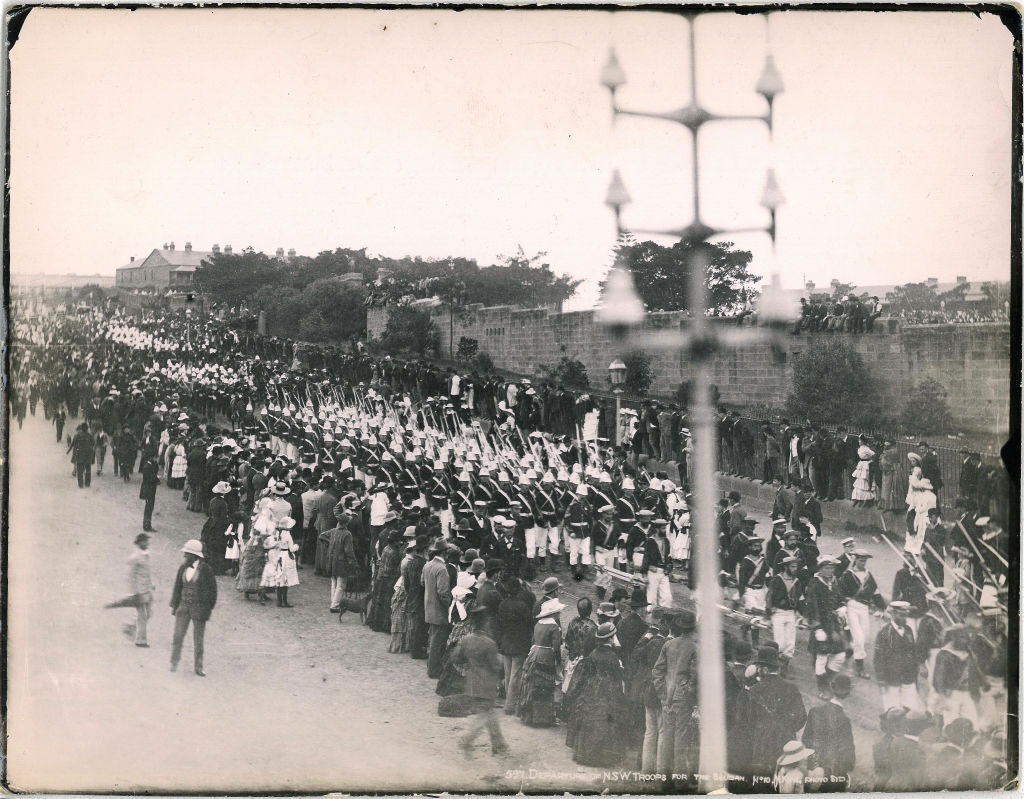
By the end of the 1880s Oxford Street was recognised as one of Sydney's most prominent high streets. Like its London namesake, it became a centre for shopping. This photo is a view east from Hyde Park across Liverpool Street and along Oxford Street towards Taylor Square. It shows Flanagan’s Hotel on the corner with Liverpool Street, now the site of the Burdekin Hotel.
View in City of Sydney Archives
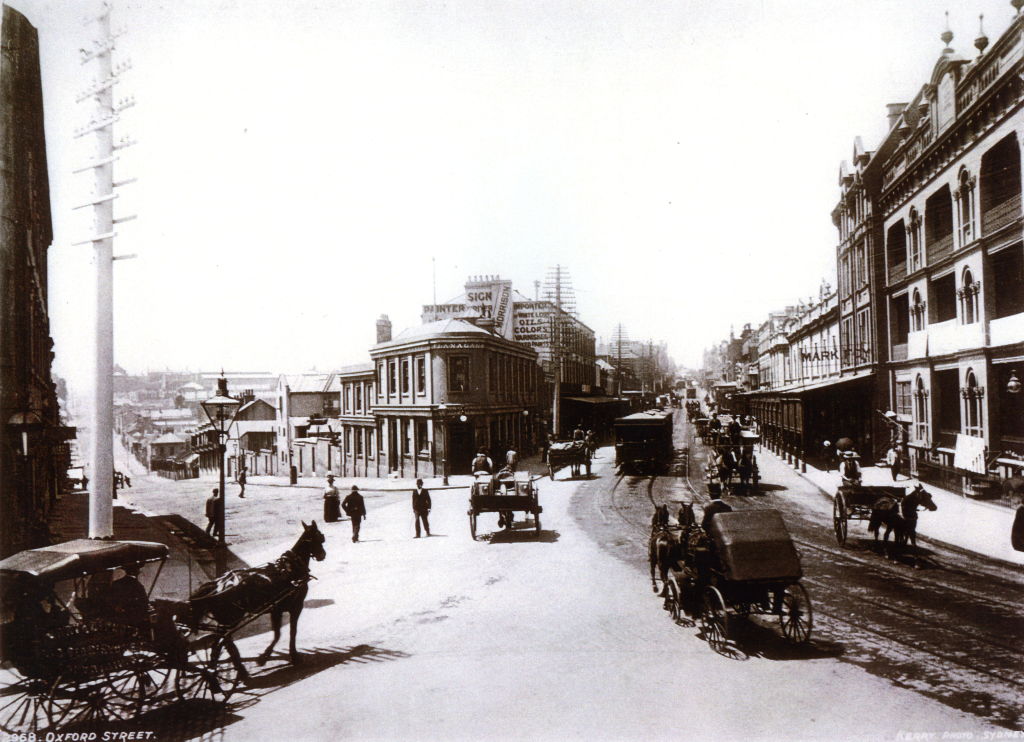
Every day, our street cleaners work hard to sweep our roads, lanes and footpaths. People have always given their feedback on how we’re performing.
In this 1887 letter to council, undertaker Charles Kinsela complains about the ‘scandalous state’ of Oxford Street on Sunday mornings. The Inspector of Nuisances Richard Seymour replies that the cleaning of Oxford Street on Saturday nights has been discontinued and he has no authority to prevent the shopkeepers from sweeping out refuse onto the street.
View in City of Sydney Archives
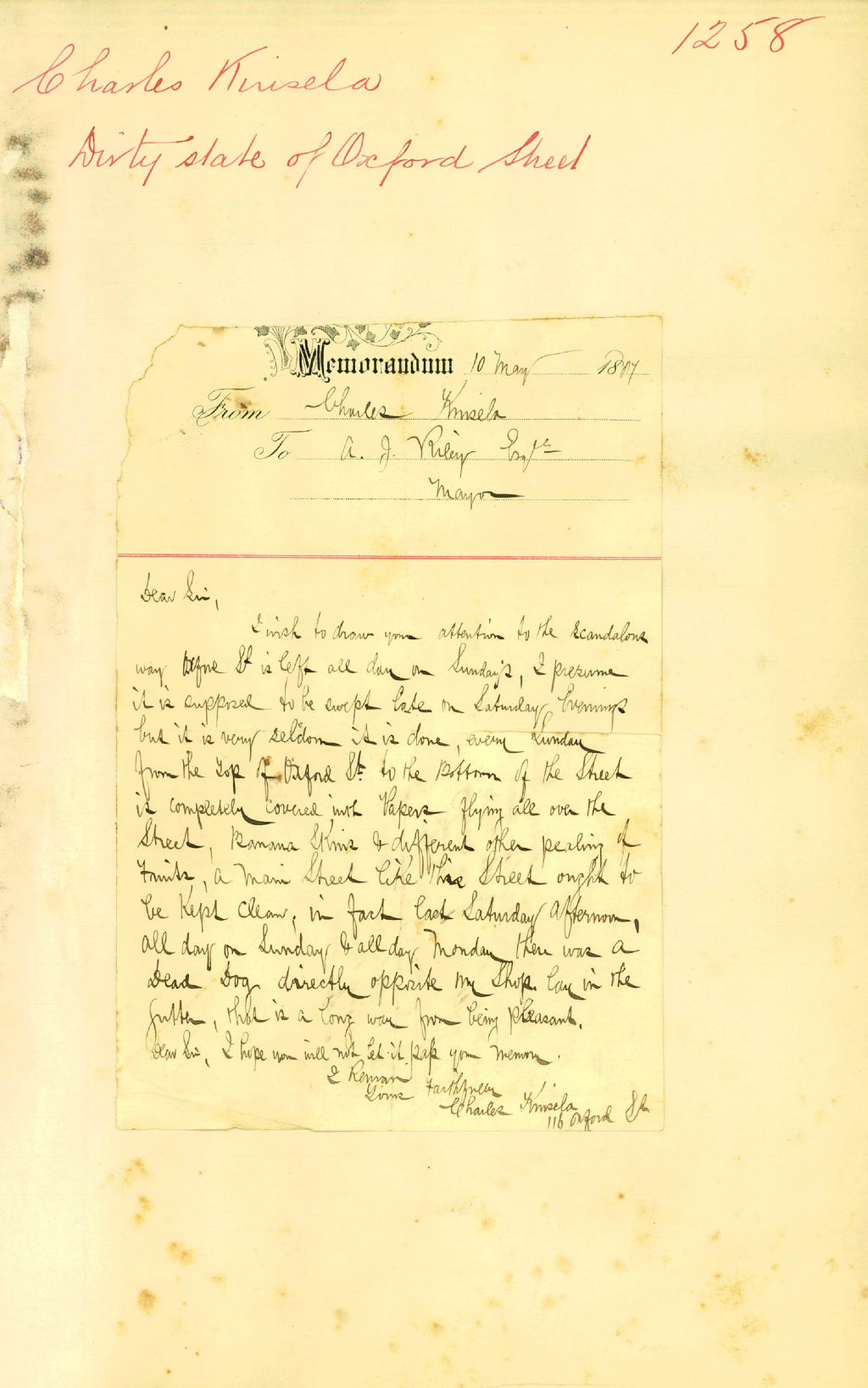
The Burdekin Hotel is an important visual landmark at the western end of Oxford Street. It marks the beginning of the street. This corner site has historical significance as it has been occupied almost continuously by a hotel since the 1840s. The existing building here is an extensive art deco refurbishment of an earlier Edwardian-era building, carried out in the late 1930s.
This letter was written by A Flanagan of the Burdekin Hotel, Oxford Street, to the Mayor in 1893. He called attention to the “state of the gutter in Liverpool St outside my hotel, the cabmen are continually complaining about it when pulling up.”
View in City of Sydney Archives.
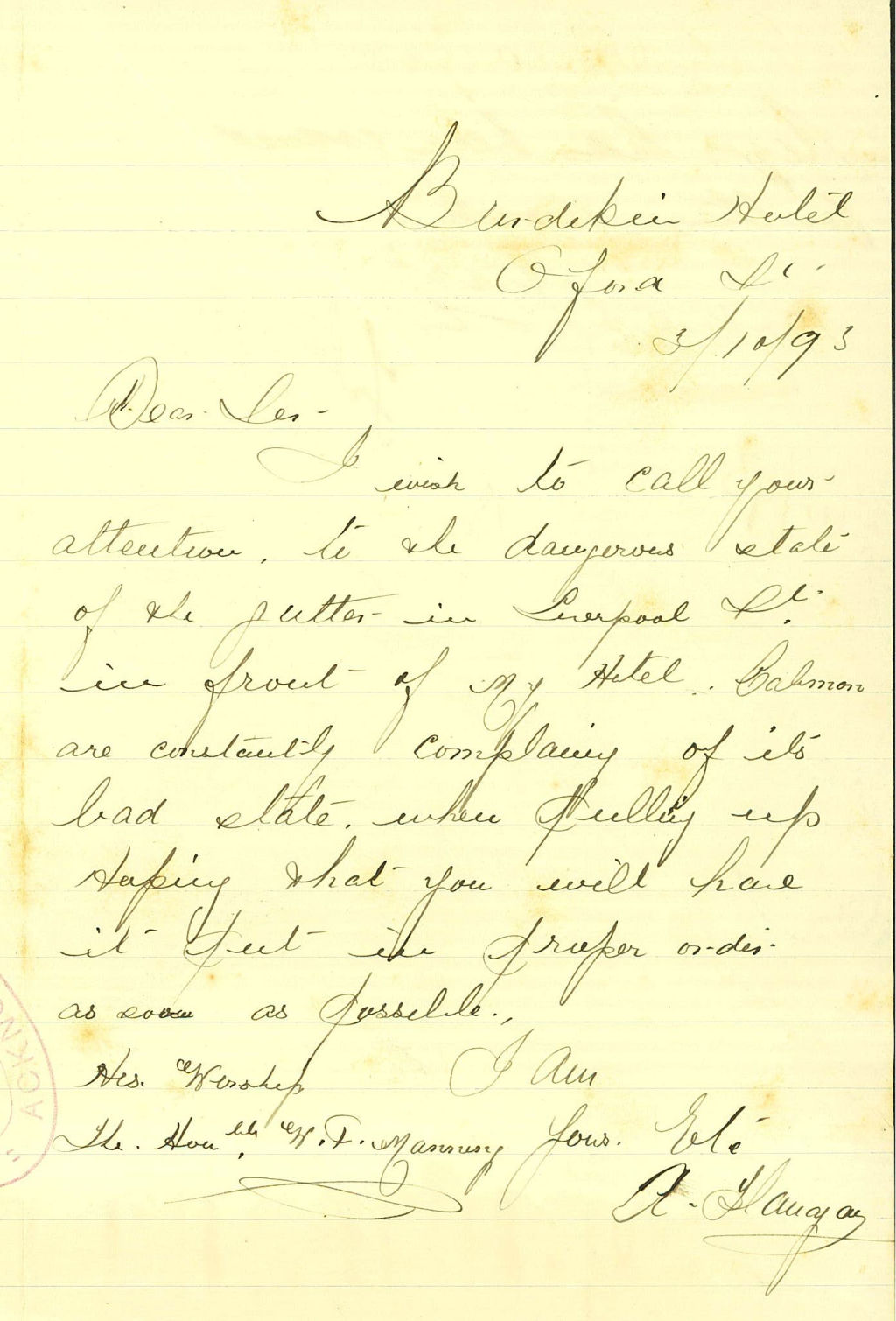
In the far distance of this photograph dating from the 1900s, you can see a painted sign for Buckingham’s Department Store. The store opened on the site of today’s Oxford Square on the corner of Riley and Oxford streets in 1894.
Items for sale included boots and shoes, underclothes, mantles, corsets, and millinery. The Buckingham family sold the business in 1967 and the Oxford Street building was sold for redevelopment. The building was destroyed in a major fire on Anzac Day in 1968.
There is one business that has endured on Oxford Street right from the first retail boom: Zink and Sons. It has provided tailoring services on Oxford Street since 1895. The business has been at 56 Oxford Street since 1910 and maintains much of its original facade.
View in City of Sydney Archives.
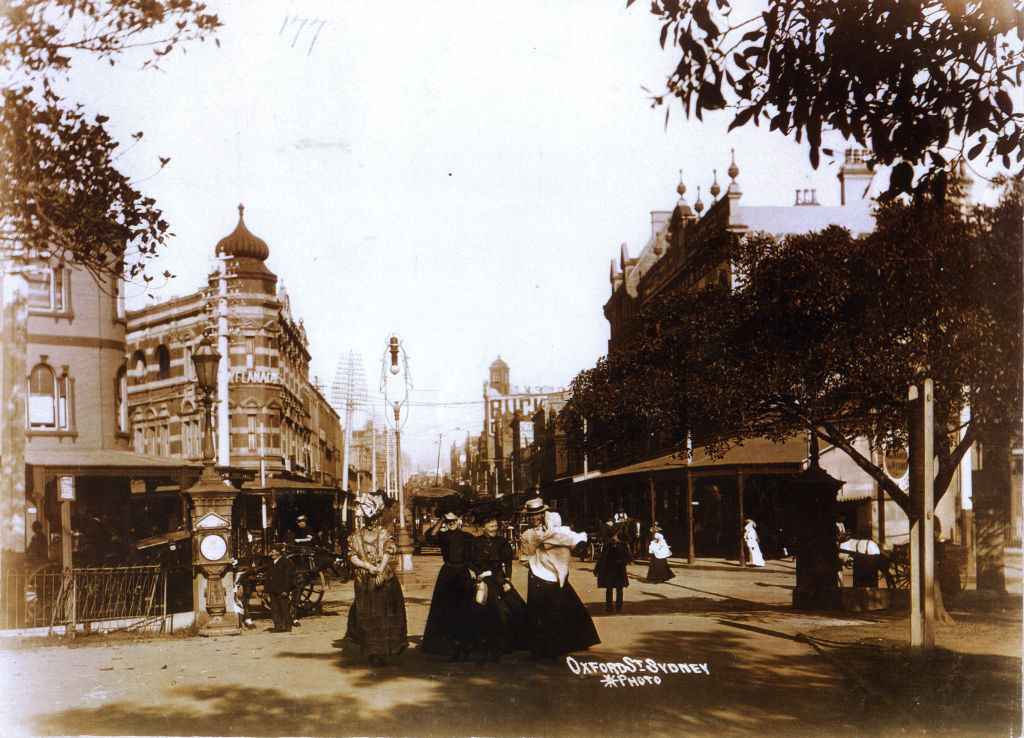
In 1907 the first stage in the widening of Oxford Street took place. The Victoria Hotel at the juncture of Bourke, Flinders and Oxford Streets, was demolished soon after this photo was taken. A new civic space was created on this intersection and named Taylor Square in 1908, after Alderman Allen Taylor, Lord Mayor of Sydney 1905–06 and 1909–12. Allen Taylor was the driving force behind an ambitious civic beautification scheme for central Sydney that included slum clearance, road widening and parks.
View in City of Sydney Archives.
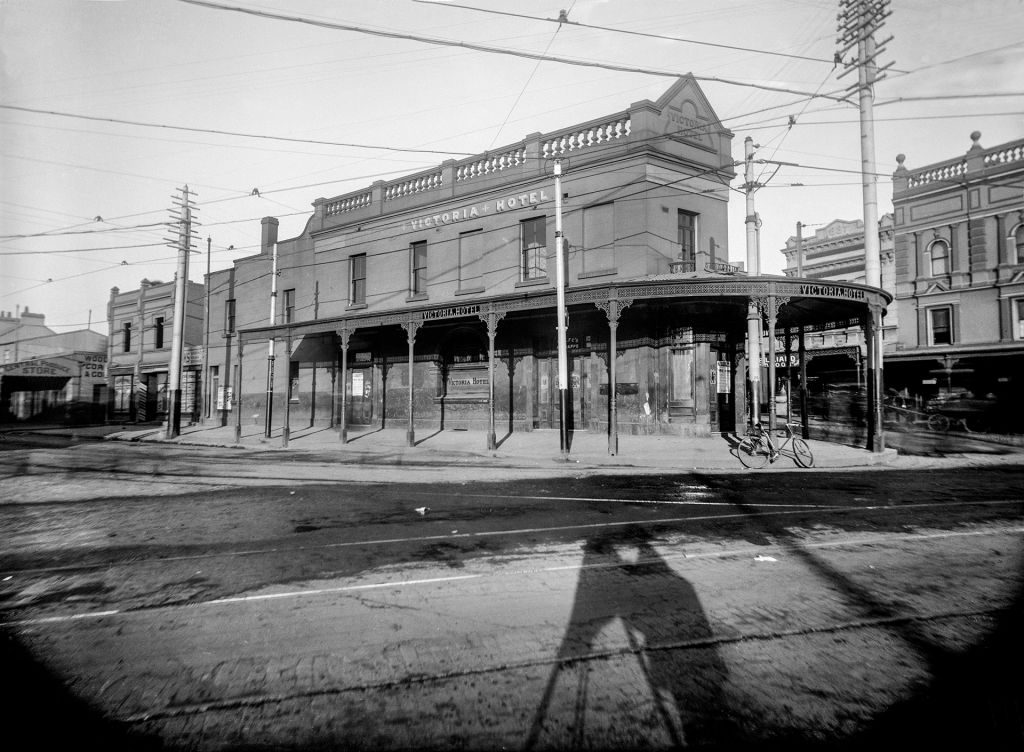
Incidentally, Taylor Square contains the oldest, surviving underground public toilet in Sydney.
It was built in 1907 and was one of 10 subterranean men’s toilets built by Sydney Municipal Council in the first decades of the 20th century. They were built in response to public health and safety concerns, particularly after the outbreak of the bubonic plague in Sydney in 1900.
The Court House Hotel can be seen in the background. This photograph is one of a set of images recording the council’s public toilets taken in the 1930s.
View in City of Sydney Archives.

By World War I Oxford Street had morphed into a boulevard that joined the city to the suburbs to its east. The area was constantly evolving. This image from 1914 shows some of that progress with a shop advertising a ‘re-building sale everything must go.’
The image comes from a series of photograph albums in the City Archives known as the ‘Demolition Books’.

Sydney's first tram system, hauled by horses, started operation in December 1861.
The Oxford Street tramline was introduced in 1880 and ran to Moore Park and Randwick Racecourse. A second line was introduced the following year travelling to Bondi Junction. Sydney’s last original tram ran on 25 February 1961. In 2019, trams were reintroduced to Sydney but didn't return to Oxford Street.
View in the City of Sydney Archives.

Town Halls throughout Sydney’s inner suburbs provided large civic spaces that Aboriginal organisations used to gather and socialise for leisure activities and political meetings. Paddington Town Hall was the venue for the first Aboriginal Debutante Ball in Sydney in 1966.
Debutante balls were an English rite of passage to formally present young women to society and were adopted by Aboriginal people as a way of fostering community pride. They also provided a social occasion for other who had few such opportunities. The debutante ball at Paddington Town Hall was organised by the Foundation for Aboriginal Affairs. The foundation was set up in 1964 to assist the ever-increasing number of Aboriginal people migrating to Sydney from country areas.
Source: Sydney Barani
View in City of Sydney Archives.
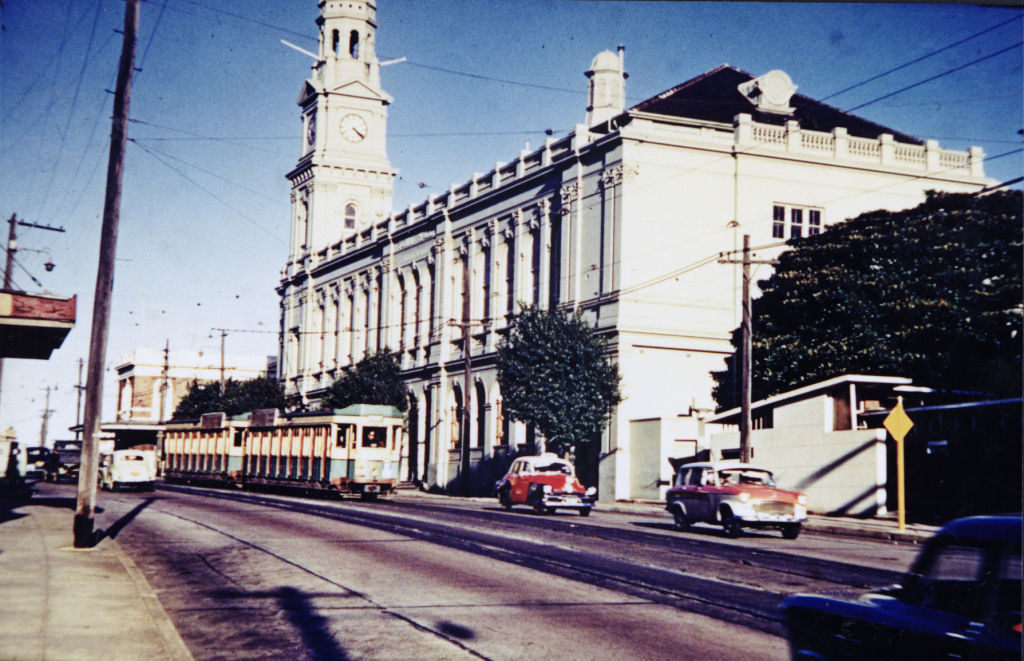
From the 1960s LGBTIQ bars, clubs, restaurants, saunas and shops appeared giving the strip its celebratory name ‘The Golden Mile’. It became synonymous with LGBTIQ life in Sydney.
View in City of Sydney Archives
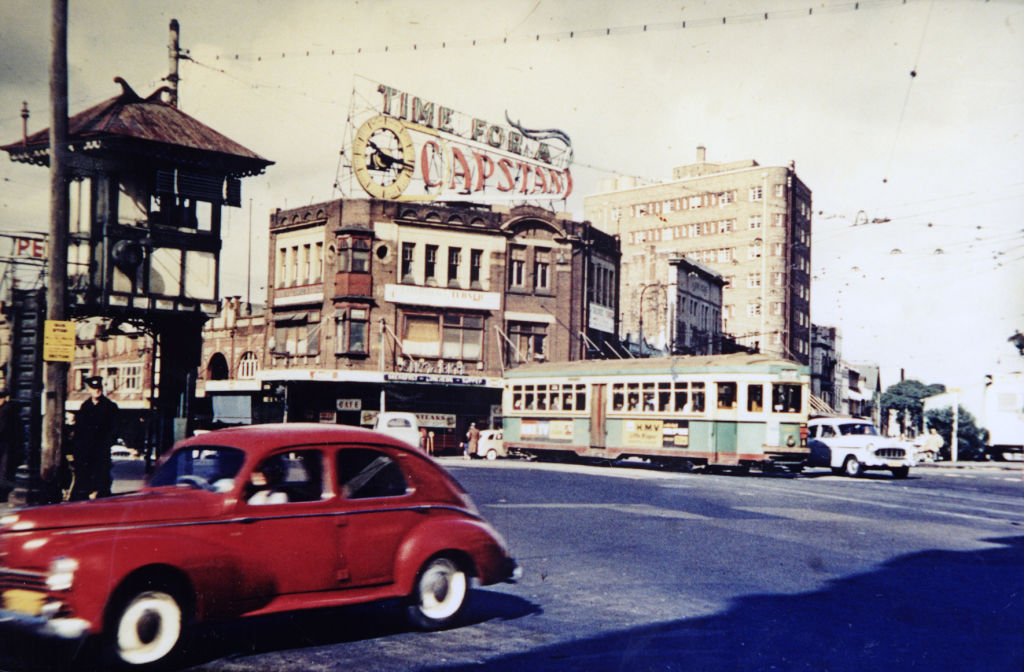
Sydney’s first Gay and Lesbian Mardi Gras took place on the night of 24 June 1978. The original plan was to parade down Oxford Street from Taylor square towards Hyde Park. A truck driven by Lance Gowland led revellers along the route.
When Gowland parked the truck on College Street, police shut the event down. Rather than dispersing, parade participants made their way up William Street to Kings Cross. 53 people were arrested during an ensuing riot on Darlinghurst Road.
Source: Sydney Culture Walks
View in City of Sydney Archives.
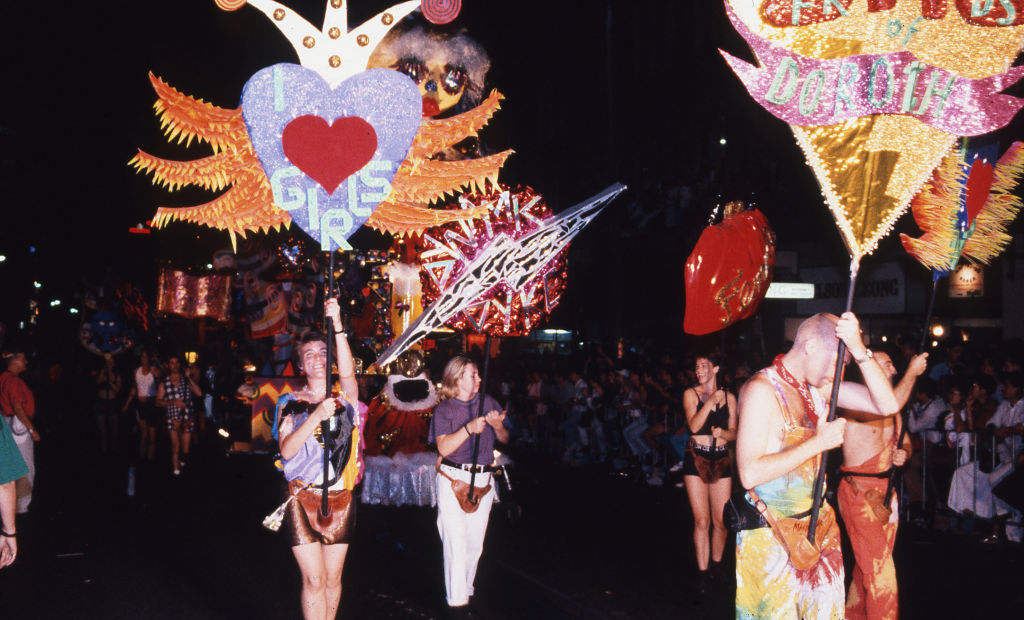
In the early 1980s the date of the Mardi Gras parade was moved from winter to autumn and the route was reversed and extended. Thousands of spectators flock to see the annual Mardi Gras parade along Oxford Street.
Source: Sydney Culture Walks
View in City of Sydney Archives.
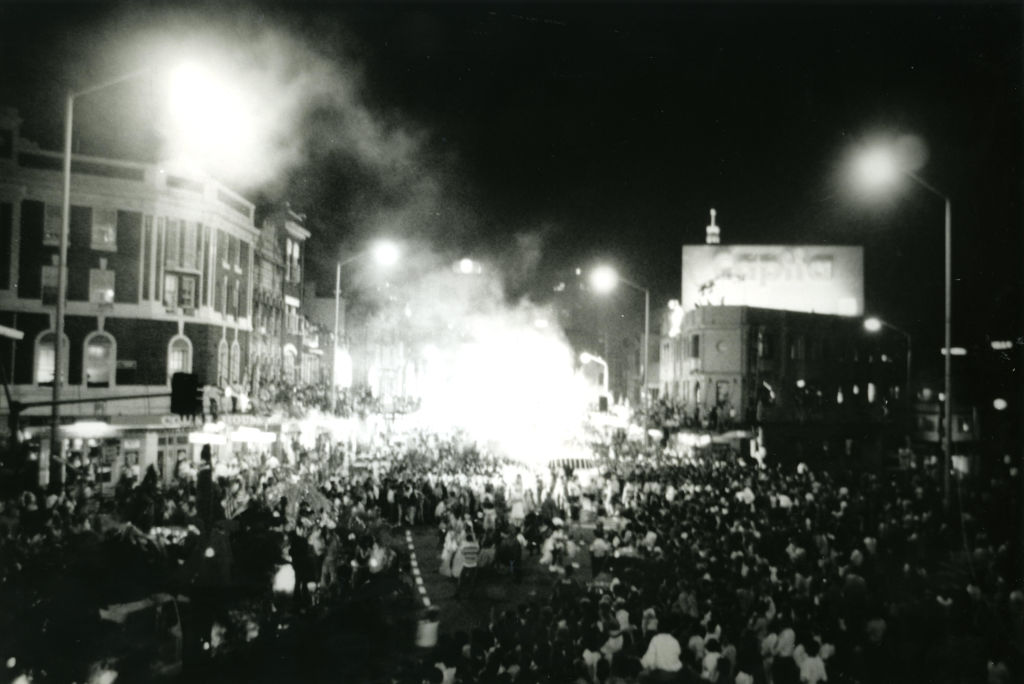
Through the late 1960s and into the 1970s, as this area became known as the gay heart of Sydney, Darlinghurst Police Station maintained a notorious reputation for homophobia and corruption.
In 1978 participants arrested at the first Gay and Lesbian Mardi Gras were brought back to this station and several were based by police in the cells. In 2016, NSW Police issued a formal apology for their actions that night.
The closure of the police station in 1986 was cause for celebration among the local LGBTIQ community, with the Sisters of the Perpetual Indulgence marking the occasion by holding an exorcism of the building.
View in City of Sydney Archives.

The Oxford Hotel has a long history of supporting the LGBTIQ community. This 1995 photo is of the annual candlelight rally and march outside the hotel to honour those who died of HIV / Aids.
The Oxford Hotel was also at the centre of the alternative music scene in Sydney. They say that in 1976, Australia's first punk band, Radio Birdman, approached the owners of the hotel. They proposed to take over the venue on the weekends "on the basis that the hotel keep the bar takings and the bands keep the proceeds of the door entry.” Radio Birdman named the Oxford Tavern venue the Funhouse - with a name inspired by Iggy Pop. This venue became a place for anti-establishment bands to play.
The hotel is opposite another famous venue, The Courthouse, aptly named for its proximity to the Darlinghurst Courthouse.
View in City of Sydney Archives.

In 2013 a rainbow crossing was installed on Oxford Street during the Mardi Gras Festival. It was a huge hit and appeared in countless photos across social media before it was removed.
In 2019 a new curved rainbow crossing was installed that wraps around the intersection of Bourke and Campbell streets, Darlinghurst.

The Albury Hotel became a gay pub in 1980. Shirtless, muscled bartenders and outrageous drag shows made it an extremely popular venue with gay men well into the 1990s.
The Albury’s closure in 2000 and the conversion of the building into shops and offices was seen by many as a sign that the glory days of the ‘Golden Mile’ were over.
Source: Sydney Culture Walks
View in City of Sydney Archives.

Paddington Town Hall has hosted several important events in the history of Sydney’s LGBTIQ community over the last 40 years including the Fourth National Homosexual Conference in 1978, which forged links between LGBTIQ activists and trade unions, and Australia’s first public meeting to discuss HIV / AIDS in August 1983.
Australia’s first national lesbian and gay rights group, Campaign Against Moral Persecution (CAMP), held dances at the town hall throughout the 1970s, and the first post-parade Mardi Gras Party was held there in 1980.
Source: Sydney Culture Walks
View in City of Sydney Archives.


The Sydney Gay and Lesbian Marid Gras Parade returns to Oxford Street on Saturday 25 February. It's part of Sydney WorldPride.
Published 26 October 2020, updated 23 February 2023